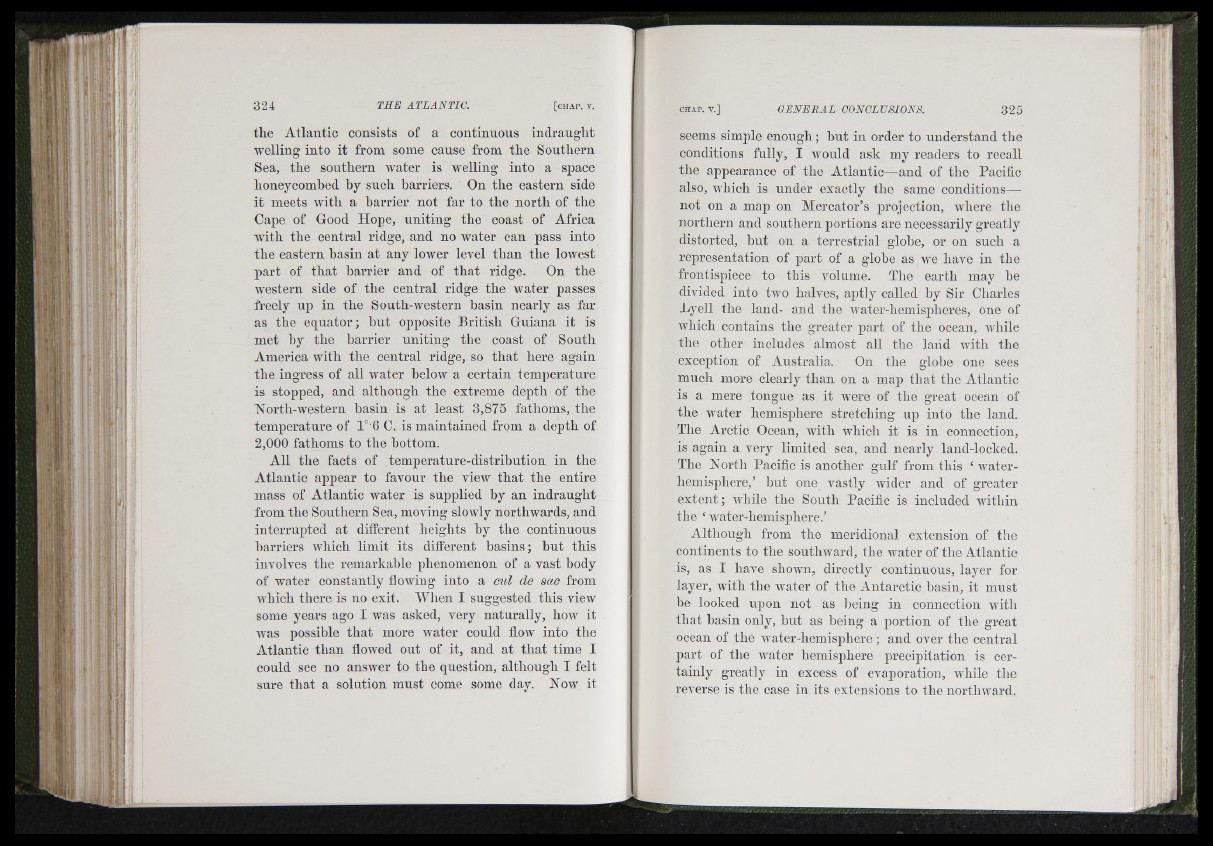
ri I
% w
lli' r-
'r If
il
rt
i!
'■El I '
the Atlantic consists of a continnons indranght
welling into it from some canse from the Sonthern
Sea, the sonthern water is welling into a space
honeycombed by snch barriers. On tbe eastern side
it meets with a barrier not far to the north of the
Cape of Good Hope, uniting the coast of Africa
with the central ridge, and no water can pass into
the eastern basin at any lower level than the lowest
part of that harrier and of that ridge. On the
western side of the central ridge the water passes
freely up in the South-western basin nearly as far
as the equator; hut opposite British Guiana it is
met by the barrier uniting the coast of South
America with the central ridge, so that here again
the ingress of all water below a certain temperature
is stopped, and although the extreme depth of the
North-western basin is at least 3,875 fathoms, the
temperatnre of 1°'6 C. is maintained from a depth of
2,000 fathoms to the bottom.
All the facts of temperatnre-distribution in the
Atlantic appear to favour the view that the entire
mass of Atlantic water is supplied by an indranght
from the Sonthern Sea, moving slowly northwards, and
interrupted at different heights hy the continuous
harriers which limit its different basins; but this
involves the remarkahle phenomenon of a vast hody
of water constantly flowing into a cul de sac from
which there is no exit. When I suggested this view
some years ago I was asked, very naturally, Iioav it
Avas possible tbat more Avater could flow into the
Atlantic than flowed out of it, and at that time I
could see no answer to the qnestion, although I felt
sure that a solution must come some day. Now it
seems simple enough; but in order to understand the
conditions fully, I Avould ask my readers to recall
the appearance of the Atlantic—and of the Pacific
also, which is under exactly the same conditions—
not on a map on Mercator’s projection, where the
northern and southern portions are necessarily greatly
distorted, hut on a terrestrial globe, or on such a
representation of part of a globe as we have in the
frontispiece to this volume. The earth may he
divided into two halves, aptly called by Sir Cbarles
Lyell the land- and the Avater-hemispheres, one of
which contains the greater part of the ocean, while
the other includes almost all the land Avith the
exception of Australia. On the globe one sees
much more clearly than on a map that the Atlantic
is a mere tongue as it Avere of the great ocean of
the water hemisphere stretching up into the land.
The Arctic Ocean, with which it is in connection,
is again a very limited sea, and nearly land-locked.
The North Pacific is another gulf from this ‘ Avater-
hemisphere,’ but one vastly Avider and of greater
extent; while the South Pacific is included Avitbin
tbe ‘ water-bemispbere.’
Altbougb from tbe meridional extension of the
continents to tbe southAvard, the Avater of the A.tlantic
is, as I have shown, directly continuous, layer for
layer, with the Avater of the Antarctic basin, it must
he looked npon not as being in connection with
th a t basin only, but as being a portion of tbe great
ocean of tbe Avater-hemisphere; and over tbe central
part of tbe water hemisphere precipitation is certainly
greatly in excess of evaporation, Avhile the
reverse is the case in its extensions to the nortliAvard.